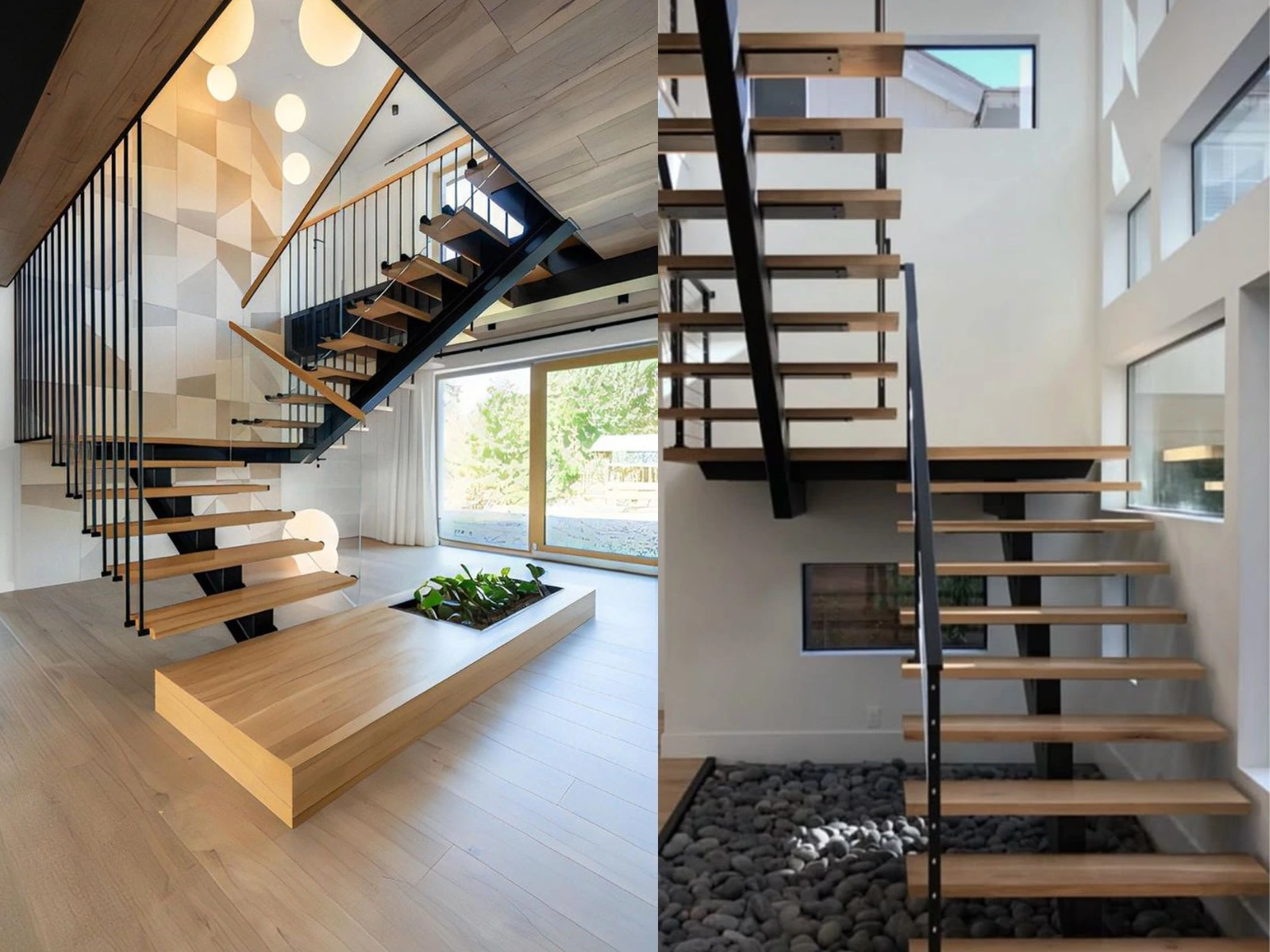Floating staircases, with their sleek and modern aesthetic, have become increasingly popular in contemporary home design. These staircases create the illusion of steps that “float” without visible supports, adding a sense of spaciousness and elegance to any interior. Building a floating metal staircase requires careful planning, precise engineering, and attention to detail. Whether you’re a seasoned builder or a homeowner considering a unique addition to your space, this guide will walk you through the steps to construct a floating metal staircase.
Step 1: Designing Your Floating Metal Staircase
The first step in building a floating metal staircase is conceptualizing and finalizing its design. Consider the following factors:
Tread Style: Decide on the tread material. Metal treads provide a sleek, industrial look, while wood treads can create a warmer or more sophisticated appearance.
Space and Layout: Measure the dimensions of your staircase area. Decide whether the staircase will be straight, spiral, or L-shaped, based on your space and preferences.
Load-Bearing Capacity: Floating staircases require a solid wall or structural beam to anchor the steps securely. Consult a structural engineer to ensure your design meets safety standards.
Material Selection: Choose a durable metal, such as steel or aluminum, for the staircase. Powder-coated steel is a popular option for its strength and corrosion resistance, while aluminum offers a lightweight alternative.
Step 2: Acquiring Necessary Permits
Before construction begins, check with your local building authority for permits and regulations. Floating staircases often have specific code requirements related to safety, including tread spacing, railing height, and weight capacity. Obtaining the necessary permits will ensure that your staircase is compliant with local laws.
Step 3: Fabricating the Stringer
The stringer is the backbone of a floating staircase. For a metal staircase, the stringer is typically a single or dual beam running along the underside of the steps. Here’s how to fabricate it:
- Material Cutting: Use a metal-cutting saw to cut the beams to the appropriate size and angle, based on your staircase design.
- Welding: Weld the brackets or step supports to the stringer. These brackets will hold each tread securely.
- Finishing: Grind and polish the welds for a smooth finish. Apply a powder coat or protective paint to prevent rust and corrosion.
Constructing a floating metal staircase requires precise technical and structural considerations to ensure safety, durability, and aesthetic appeal. The primary structural element is the stringer, typically a single or dual metal beam, which must be fabricated from high-strength materials like steel or aluminum to bear the load of the staircase and its users. This stringer must be securely anchored to a load-bearing wall or structural beam using heavy-duty bolts or brackets, as the wall provides the necessary support to maintain the staircase’s “floating” effect. The wall itself must be thoroughly evaluated by a structural engineer to confirm its capacity to handle the weight and stresses imposed by the staircase. Tread brackets must be evenly spaced and securely welded to the stringer, adhering to local building codes for spacing and dimensions to ensure user safety. Additionally, all connections, including those for railings and handrails, should be meticulously secured with locking bolts or welds to prevent loosening over time. Protective coatings, such as powder coating or rust-resistant paint, are essential to protect metal components from corrosion, especially in humid or coastal environments. Proper alignment, levelness, and weight distribution are critical throughout the installation process, as any imbalance can compromise the staircase’s integrity and safety.
Step 4: Installing the Stringer
Securely mounting the stringer is a critical step:
- Wall Anchoring: Use heavy-duty bolts to attach the stringer to a load-bearing wall or structural beam. Ensure the alignment is precise to maintain the staircase’s balance and aesthetic.
- Floor and Ceiling Fixings: Anchor the stringer at the floor and ceiling if needed. Double-check the stability to avoid any future shifting.
Step 5: Attaching the Treads
The treads are the visible steps of your staircase. Here’s how to install them:
- Material Preparation: If using wooden treads, sand and finish them before installation. For metal or glass treads, ensure they are pre-cut and polished.
- Securing Treads: Bolt each tread onto its bracket or support on the stringer. Use washers and locking nuts to prevent loosening over time.
- Spacing: Maintain consistent spacing between treads, adhering to building codes for safety.
Step 6: Adding Railings and Handrails
Safety is paramount, so installing railings or handrails is essential:
- Design Matching: Choose railings that complement the staircase design. Metal railings can create a cohesive look, while glass panels can enhance the floating effect.
- Installation: Weld or bolt the railings to the stringer and wall. For a seamless appearance, consider using concealed fixings.
- Finishing Touches: Ensure all edges are smooth and apply a protective coating if necessary.
Step 7: Inspecting and Finalizing
Once construction is complete, thoroughly inspect the staircase for stability and safety. Test the load-bearing capacity by applying weight to each step and the railing. Make any necessary adjustments before using the staircase.
Maintenance Tips for Floating Metal Staircases
To keep your staircase looking and functioning its best:
- Regular Cleaning: Wipe down metal surfaces with a damp cloth to remove dust and debris. For wooden or glass treads, use appropriate cleaning solutions.
- Check Fixings: Periodically inspect bolts, brackets, and railings for signs of loosening.
- Prevent Corrosion: Ensure the staircase remains rust-free by addressing scratches or chips in the protective coating promptly.
Building a floating metal staircase requires a balance of technical skill, aesthetic sense, and attention to safety. With careful planning and the right materials, you can create a stunning feature that elevates your home’s design while providing functionality and durability. Whether you tackle the project yourself or hire professionals, a well-executed floating staircase is sure to be a conversation starter and a lasting addition to your space.
For further design updates please visit our YouTube Channel :


